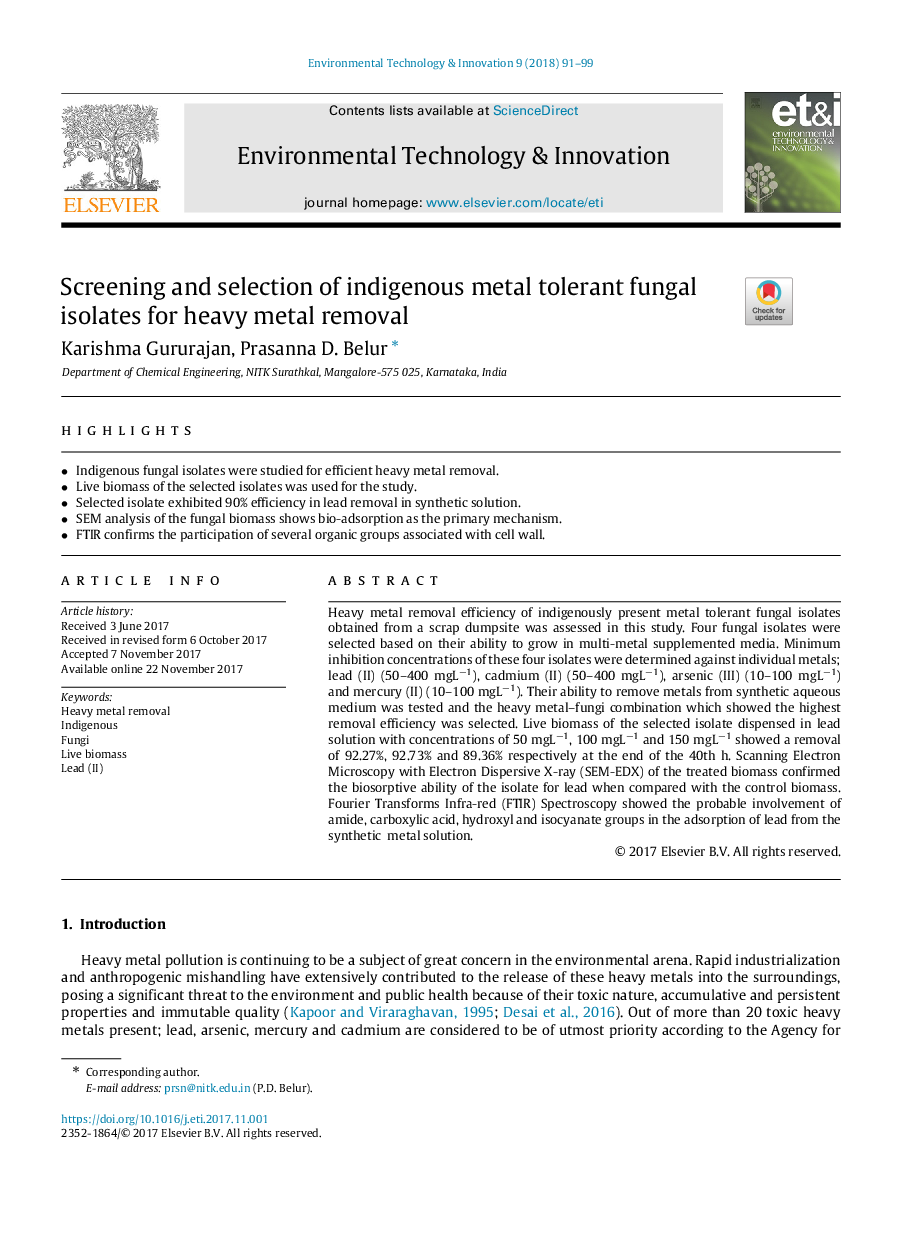| Article ID | Journal | Published Year | Pages | File Type |
|---|---|---|---|---|
| 8858051 | Environmental Technology & Innovation | 2018 | 9 Pages |
Abstract
Heavy metal removal efficiency of indigenously present metal tolerant fungal isolates obtained from a scrap dumpsite was assessed in this study. Four fungal isolates were selected based on their ability to grow in multi-metal supplemented media. Minimum inhibition concentrations of these four isolates were determined against individual metals; lead (II) (50-400Â mgLâ1), cadmium (II) (50-400Â mgLâ1), arsenic (III) (10-100Â mgLâ1) and mercury (II) (10-100Â mgLâ1). Their ability to remove metals from synthetic aqueous medium was tested and the heavy metal-fungi combination which showed the highest removal efficiency was selected. Live biomass of the selected isolate dispensed in lead solution with concentrations of 50Â mgLâ1, 100Â mgLâ1 and 150Â mgLâ1 showed a removal of 92.27%, 92.73% and 89.36% respectively at the end of the 40th h. Scanning Electron Microscopy with Electron Dispersive X-ray (SEM-EDX) of the treated biomass confirmed the biosorptive ability of the isolate for lead when compared with the control biomass. Fourier Transforms Infra-red (FTIR) Spectroscopy showed the probable involvement of amide, carboxylic acid, hydroxyl and isocyanate groups in the adsorption of lead from the synthetic metal solution.
Related Topics
Life Sciences
Environmental Science
Environmental Chemistry
Authors
Karishma Gururajan, Prasanna D. Belur,
